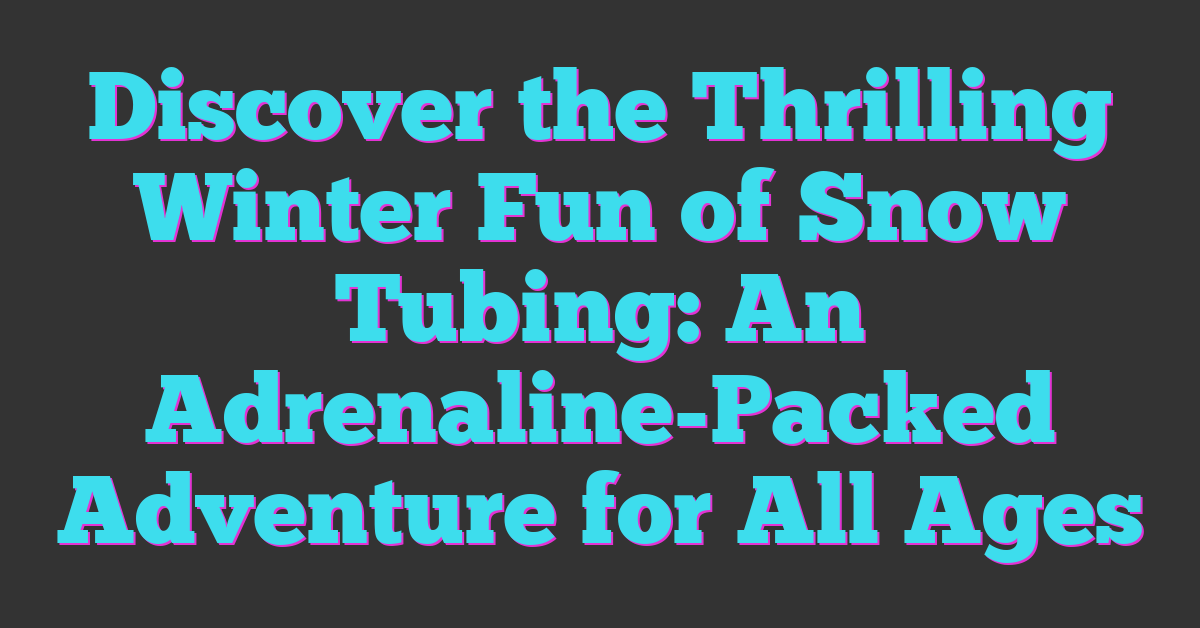When it comes to the ultimate winter getaway, two names always pop up: Whistler and Aspen. Both destinations boast stunning landscapes and vibrant ski cultures, but there’s one factor that truly sets them apart—snow quality. Having experienced the slopes of both, I’ve found that the type of snow can make or break your skiing experience.

Overview of Whistler and Aspen
Whistler and Aspen both stand out as premier winter sports destinations, each boasting unique characteristics that cater to snow sports enthusiasts. I’ve had the pleasure of experiencing both locations, and I can say that they offer distinct vibes and conditions for skiing, snowboarding, sledding, and cross-country skiing.
Whistler, located in British Columbia, showcases breathtaking mountain views and an extensive ski area. With over 8,000 acres of skiable terrain, it’s known for its diverse slopes and consistent snowfall. The snow quality here is often praised for its light, powdery texture, ideal for those deep runs and thrilling powder days that every skier dreams of. The vibrant village atmosphere further enhances the experience, offering ample dining and après-ski options.
Aspen, nestled in Colorado’s Rocky Mountains, brings a different flavor. Known for its glamorous ambiance and rich history, Aspen presents a mix of challenging runs along with a more relaxed vibe. The four mountain areas—Aspen Mountain, Aspen Highlands, Buttermilk, and Snowmass—provide varied terrain options, ensuring that every winter sports enthusiast finds something suitable. Aspen’s snow often has a slightly heavier consistency compared to Whistler’s, which can make for exciting turns and varied conditions.
Both Whistler and Aspen promise unforgettable experiences for winter sports lovers. While Whistler offers vast terrain with light powder, Aspen delivers challenging runs with a touch of luxury. Choosing between them boils down to personal preference, as each has a charm that captures the hearts of those passionate about the snow.
Snow Quality Factors
Snow quality impacts my overall experience on the slopes. Two aspects stand out: weather conditions and snowmaking techniques.
Weather Conditions
Weather conditions play a significant role in snow quality. Whistler often benefits from its coastal location, resulting in wetter, lighter snow. The Pacific storms deliver ample snowfall, typically from November to April, which blankets the mountains in that iconic powder. This moisture creates a fluffy snowpack, perfect for powder hounds like me. Aspen’s higher elevation and drier climate can lead to heavier snow, especially during spring melts. This density provides a unique challenge for skiers and snowboarders, ideally suited for those who enjoy making tracks on hard-packed runs.
Snowmaking Techniques
Snowmaking techniques also affect snow quality. Whistler uses advanced snow guns to optimize conditions, particularly in early season. The ability to create quality artificial snow allows for more reliable terrain openings by late November. This technology complements natural snowfall, ensuring a consistent base throughout the ski season. Conversely, Aspen has invested significantly in snowmaking infrastructure, which enhances their snowpack on all four areas. Efficient snowmaking in Aspen allows for more accessible skiing despite changing weather patterns, appealing to those who appreciate a varied skiing environment.
Comparing Snow Quality in Whistler
Whistler boasts an impressive snow quality that’s a dream for any snow sports enthusiast. The combination of natural snowfall and meticulous grooming practices creates a skiing and snowboarding environment that’s tough to beat.
Natural Snowfall
Whistler’s natural snowfall is remarkable, averaging around 30 feet of snow each winter. This abundant snowfall, influenced by Pacific storms, results in a lighter, fluffier powder. The snow tends to fall consistently throughout the season, ensuring that runs remain fresh. I appreciate the joy of floating through powder on a deep day, relishing every turn on the pristine surface. Plus, the snow’s consistency means I can enjoy optimal conditions for everything from skiing to snowboarding. If you enjoy surprises, expect delightful snowfall that allows you to explore new lines almost every weekend.
Grooming Practices
Whistler excels not only in natural snowfall but also in grooming practices. The resort employs advanced grooming machines to maintain the quality of its trails, ensuring a smooth experience on groomed runs. The dedicated grooming team strategically maintains slopes to enhance the skiing experience, particularly for those who prefer well-prepared terrain. I find that early morning groomed runs provide an exhilarating way to start the day, with crisp, corduroy lines awaiting my descent. This combination of extensive snowmaking and daily grooming helps to preserve excellent conditions into late spring, making Whistler a fantastic choice for winter sports lovers throughout the entire season.
Comparing Snow Quality in Aspen
Aspen’s snow quality represents a unique experience for snow sports lovers. Known for its luxury and vibrant ski culture, the area enhances adventures with its specific snow characteristics.
Natural Snowfall
Aspen averages about 300 inches of natural snowfall each winter. This snowfall offers a blend of conditions but tends to lean towards heavier, denser snow. Since its climate is drier compared to coastal areas like Whistler, the snowpack can become compact, especially during spring. I often find this snow provides excellent grip for carving sharp turns on groomed runs. The snowfall patterns vary across its four mountains—Aspen Mountain, Aspen Highlands, Buttermilk, and Snowmass—each presenting different conditions and experiences.
Grooming Practices
Aspen’s grooming practices are top-notch, ensuring well-maintained trails across diverse terrains. The resort utilizes advanced machines to meticulously groom its runs, promoting smoother descents. I appreciate how the grooming adapts to the snow conditions, maintaining optimal surfaces even when the snow is heavier. The grooming team works overnight, so fresh, well-prepared trails greet skiers and snowboarders each morning. This attention to detail enhances the skiing experience and allows everyone from beginners to experts to fully enjoy the beauty of Aspen’s slopes.
Pros and Cons of Each Destination
Whistler
Pros:
- Powder Quality: Whistler’s light, powdery snow creates an incredible ride for deep runs, perfect for powder days.
- Terrain Variety: With over 8,000 acres of skiable terrain, Whistler offers countless trails catering to different skill levels, ensuring endless exploration.
- Snowfall: An impressive average of around 30 feet of natural snowfall each winter keeps conditions fresh, boosting excitement for every visit.
- Vibrant Atmosphere: Whistler’s lively village is filled with diverse dining options and après-ski activities, enhancing the overall experience after a day on the slopes.
Cons:
- Crowds: Whistler can get quite crowded during peak season, which means longer lift lines and busier slopes.
- Price: The overall cost of lodging, meals, and lift tickets tends to be higher compared to other resorts, impacting budget-conscious enthusiasts.
Aspen
Pros:
- Varied Terrain: Aspen boasts four mountains, each offering unique runs and challenges, making it ideal for skiers seeking variety.
- Grooming Excellence: I appreciate Aspen’s commitment to grooming, with meticulous trail maintenance that ensures smooth descents on hard-packed snow.
- Historical Charm: The rich history and glamour of Aspen create a unique ambiance, elevating the experience beyond just the skiing.
- Grip on Groomed Runs: Heavier snow during spring provides excellent grip for carving, appealing to those who enjoy precision turns.
Cons:
- Snow Density: Heavier snow can sometimes pose challenges, particularly for those who prefer lighter and fluffier conditions.
- Elevation: Higher elevation may lead to unpredictable weather patterns, which could impact snow quality throughout the season.
Both destinations offer compelling reasons to visit, making it an exciting choice for any snow sports lover. Each location provides a unique set of experiences, ensuring that I can find something special whether I’m in Whistler or Aspen.
Conclusion
Choosing between Whistler and Aspen really comes down to what kind of snow experience you’re after. If you love light powder and breathtaking scenery Whistler’s your place. The vibe is lively and the skiing is fantastic with plenty of options for everyone.
On the other hand if you’re drawn to a more glamorous atmosphere with varied terrain Aspen can’t be beat. The heavier snow offers a different thrill especially if you enjoy carving sharp turns.
Both resorts have their unique charms and offer unforgettable experiences. So whether you’re hitting the slopes in Whistler or enjoying the luxury of Aspen you’re sure to have an amazing time. Happy skiing!










